Then we talked a little bit about combining specific colors in A Man’s Guide to Combining Colors.
Now we’re going to get a little more specific about what each color in your wardrobe really is. The odds are that most of the colors you wear are some form of shade, tint, or tone. That’s because the basic colors from the visual spectrum are bright to our eyes — good on a Hawaiian shirt, but not so great on a suit.
Shading, tinting, and toning are three different ways of altering colors to make them more muted. That often makes them easier to wear in multiple outfits.
Think of the difference between a bright red shirt worn with a bright green tie and a deep burgundy shirt worn with a forest green tie. The first is basically a novelty outfit for a Christmas party while the second is respectable year-round, even though both use the same contrast of complementing red and green. That’s because of the muting effect of shading.
So let’s revisit the color wheel from A Man’s Introduction to Color for just a minute here. The names around the outside describe the hues — the base colors themselves. You can see those in the central of the three rings:
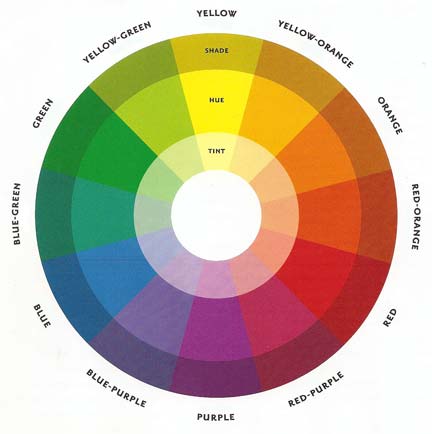
Hues
The central hues are the visible color spectrum in their most basic form. They read very brightly to our eyes.
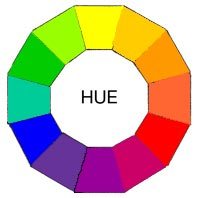
Tints
Tinting is accomplished by adding white to any of the central hues. This produces a paler, more washed-out color. All the pastels in your wardrobe are tints.
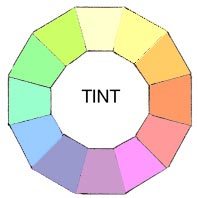
Shades
Shading is the opposite of tinting: it adds black to the base hues instead of white. The resulting colors are deep and rich:
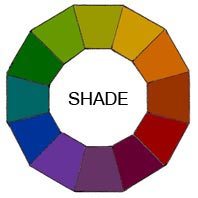
Tones
The last variation on color doesn’t appear on the basic color wheel at the top of this article. That’s because it’s the odd in-between cousin of shading and tinting: toning. Toning means adding both black and white to “gray out” a color.
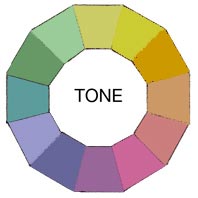
Putting it All Together
So what does all that mean for menswear? Mostly it means that you can always create the color combinations you want. If you favor a color scheme that would be too bright in its basic hues — blue and orange, red and green, and so forth — you can modify one or more of the colors by selecting tints, shades, or tones that mute the overall effect.
Our Man’s Introduction to Color outlined three basic color schemes that work well in menswear: associated colors, complementary colors, and triad colors. Consider an example of each one and how tints, shades, and tones are necessary to achieve a good look:
Associated Outfit Example
A man is invited to stand up at a wedding and is told the groom’s party is wearing blue. He chooses a good navy blue suit (shade) and a light blue undershirt (tint). A blue silk tie (hue) falls neatly between the two so that there’s contrast between all the pieces of his outfit. He adds a light blue boutonniere (tint) for a splash of colorful contrast on his dark suit.
Complementary Outfit Example
A man attends a large outdoor brunch event in the summer. A lightweight khaki suit (tint) offers comfort and a touch of dressiness. He opts for a pale lavender shirt (tint) to contrast with the yellow-based khaki and adds a rich purple bow tie (shade). A bright purple pocket square (hue) rounds out the ensemble: summery, festive and original.
Triad Outfit Example
For a basic business ensemble a man chooses his trust navy blue suit (shade). A white-and-yellow striped shirt (tint) gives a nice light base. He puts on a basic red tie (hue), adds a rusty-red pocket square (tone), and the outfit is ready to go: complicated, eye-catching without being flashy, and neatly balanced on the color wheel.
None of these outfits would be possible without using the different kinds of colors — hues, tints, shades and tones — in combination. The better you understand what each one looks like in your wardrobe, the easier putting your outfits together will be.
Related post:
http://matthewaperrysuits.blogspot.com/2013/05/the-adventures-of- gentleman.html http://fashionmansuits.blogspot.com/2013/05/vengeance-of- elegant-gentlemens-shirts.html
http://mansuits123.blogspot.com/2013/05/natural-shoulder.html

No comments:
Post a Comment